#1. Produce Your Own Power!
Installing home solar electric panels can potentially eliminate your energy bills. Extra energy that your solar system generates during peak sun hours can be sold back to your utility company under ‘net metering’ laws in many states, thereby offsetting your bill. The most effective approach is to install solar to cover ~75% of your home’s energy needs – typically a 3-10 kilowatt (kW) solar panel system.
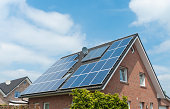 The benefits are clear: energy prices are rising, costs for solar panels are falling, big government rebates and other incentives are available, many new solar financing programs offer $0 down installation, and recent models are quite visually appealing. Further they are extremely reliable and warrantied, and can raise the value of your home! To inquire and see if you qualify, fill out this solar quotes form.
The benefits are clear: energy prices are rising, costs for solar panels are falling, big government rebates and other incentives are available, many new solar financing programs offer $0 down installation, and recent models are quite visually appealing. Further they are extremely reliable and warrantied, and can raise the value of your home! To inquire and see if you qualify, fill out this solar quotes form.
#2. Update Your Windows and Doors to Double-Pane
Take a look at your windows rather than out them if you want to save energy at home. Approximately one-third of a home’s total heat loss usually occurs through windows and doors.  What lets in light and fresh air may also be letting heat escape in the winter or unnecessarily heating up your home in the summer. Replacing your windows with double-pane windows and glass doors can significantly reduce energy demands and improve the comfort of your home. Importantly, rebates and incentives are often available for replacing windows!
What lets in light and fresh air may also be letting heat escape in the winter or unnecessarily heating up your home in the summer. Replacing your windows with double-pane windows and glass doors can significantly reduce energy demands and improve the comfort of your home. Importantly, rebates and incentives are often available for replacing windows!
To learn about top rated windows and doors, and get free consultations from windows experts, check out this complimentary service that puts you in touch with the experts: Home USA.
#3. Properly Set or Upgrade Your Heating & Cooling HVAC Systems
The Environmental Protection Agency (EPA) recommends setting the temperature on your water heater to 120 degrees, where you’ll be reducing your water-heating costs by 6-10 percent. Many water heaters and boilers are set far too high, above 140 degrees, which is simply a waste of energy and money!
Replacing 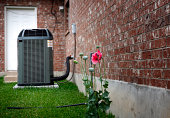 less efficient HVAC equipment with newer, more efficient equipment can yield operating cost reductions. According to the EPA, replacing components of a less efficient HVAC system typically cuts energy costs by about 20 percent. Good news, often you can also get government rebates for installing energy efficient models. Professional installers can easily recommend and replace your existing heating & cooling system and allow you to reduce your bills AND get a tax break! Learn more from a free consult from professional heating & cooling experts.
less efficient HVAC equipment with newer, more efficient equipment can yield operating cost reductions. According to the EPA, replacing components of a less efficient HVAC system typically cuts energy costs by about 20 percent. Good news, often you can also get government rebates for installing energy efficient models. Professional installers can easily recommend and replace your existing heating & cooling system and allow you to reduce your bills AND get a tax break! Learn more from a free consult from professional heating & cooling experts.
#4. Fix Peeling Exterior Paint
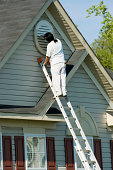 Peeling or cracking paint, on your home’s exterior, may be a sign of a humidity problem or improper application. Peeling exterior paint is caused by moisture being absorbed through the back of wood siding and passing through to the exterior surface under the paint. The paint loses adhesion and peels off. When there are paths from the interior of your home to the exterior, you are allowing hot or cool air to escape, which makes your home less energy efficient.
Peeling or cracking paint, on your home’s exterior, may be a sign of a humidity problem or improper application. Peeling exterior paint is caused by moisture being absorbed through the back of wood siding and passing through to the exterior surface under the paint. The paint loses adhesion and peels off. When there are paths from the interior of your home to the exterior, you are allowing hot or cool air to escape, which makes your home less energy efficient.
For free information from professional painters, please visit our partner, Home USA:
#5. Make Sure Your Roof is in Good Shape
If you’ve ever stood on a roof on a hot summer day, you know how hot it can get. The heat from your roof makes your air conditioner work even harder to keep your home cool. Energy-efficient roofing materials can dramatically reduce household energy use, thereby decreasing greenhouse gas emissions and significantly lowering utility bills. Though the initial price of an energy-efficient roof can be slightly higher, the investment is made up for in reduced utility bills over the life of the building. Many Energy Star-rated roofs are also eligible for tax credits!
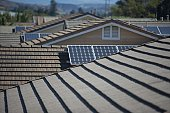 There are many types of roof systems available, but the surface exposed to the sun is the one that determines if a roof is cool or not. You can usually make a new or existing roof cool by selecting the appropriate surface. Cool roof coatings are white or special reflective pigments that reflect sunlight. Coatings are like very thick paints that can protect the roof surface from ultra-violet (UV) light and chemical damage, and some offer water protection and restorative features. Products are available for most roof types. To find out more about what you can do to improve your roof and your home’s efficiency, contact a =certified roofing professional at Home USA:
There are many types of roof systems available, but the surface exposed to the sun is the one that determines if a roof is cool or not. You can usually make a new or existing roof cool by selecting the appropriate surface. Cool roof coatings are white or special reflective pigments that reflect sunlight. Coatings are like very thick paints that can protect the roof surface from ultra-violet (UV) light and chemical damage, and some offer water protection and restorative features. Products are available for most roof types. To find out more about what you can do to improve your roof and your home’s efficiency, contact a =certified roofing professional at Home USA:
#6. Green-ify Your Siding
Fiber cement, wood, vinyl, brick, manufactured stone, stucco… there are a lot of choices out there when picking out an exterior cladding or siding for your home. But suppose that you want your home to be green on the inside and out? How do you choose the right material for your build?
Like many building product categories, choosing siding for a green-built home is far from cut-and-dried. 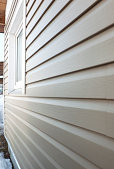 Among mainstream cladding materials, each product comes with its own set of features and benefits, both from a sustainability perspective and from the attributes of price, installation, appropriateness for climate, and aesthetics. As such, while certain products have emerged as leaders in the green-building industry, no option is perfect. Perhaps this is to be expected, considering we rely on cladding materials to protect homes from the worst Mother Nature can throw at them—and still look good doing it. Get free siding quotes from Home USA:
Among mainstream cladding materials, each product comes with its own set of features and benefits, both from a sustainability perspective and from the attributes of price, installation, appropriateness for climate, and aesthetics. As such, while certain products have emerged as leaders in the green-building industry, no option is perfect. Perhaps this is to be expected, considering we rely on cladding materials to protect homes from the worst Mother Nature can throw at them—and still look good doing it. Get free siding quotes from Home USA:
#7. Heat Your Water with the Power of the Sun
A solar hot water system is not just a conscientious purchase for the environment, it has real and practical benefits for you the consumer/homeowner. Monthly savings on your energy bills: studies estimate that hot water accounts for 15-30% of the average homeowner’s energy costs. 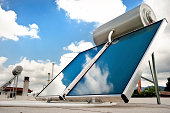 What other home improvement pays for itself and keeps paying you for 20, 30 even 40 years? Increased value of your home; a study by the Appraisal Institute have determined that people are willing to pay more for homes with solar hot water systems. And, owning your energy instead of renting it from the power company. For a free quote for solar hot water, please visit the free service provided by Home USA:
What other home improvement pays for itself and keeps paying you for 20, 30 even 40 years? Increased value of your home; a study by the Appraisal Institute have determined that people are willing to pay more for homes with solar hot water systems. And, owning your energy instead of renting it from the power company. For a free quote for solar hot water, please visit the free service provided by Home USA: